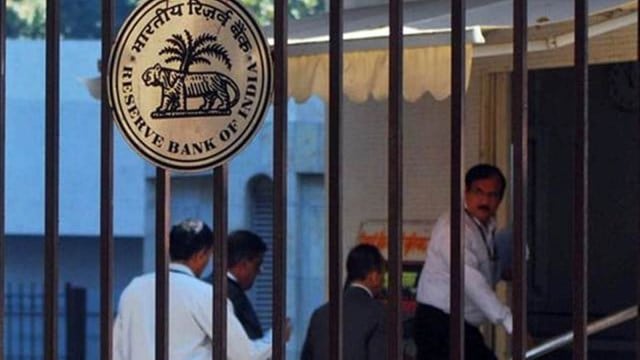Banking liquidity deficit over Rs 2 lakh crore on lower govt spending, weak deposit growth
In the fortnight ended December 29, the bank deposits grew by 13 per cent on a year-on-year basis, while credit grew by 20 per cent, the latest RBI data showed.
 The liquidity deficit, as reflected by the amount of money injected by the Reserve Bank of India into the banking system, stood at Rs 2.11 lakh crore on Monday. (File Photo)
The liquidity deficit, as reflected by the amount of money injected by the Reserve Bank of India into the banking system, stood at Rs 2.11 lakh crore on Monday. (File Photo)With the Interim Budget just two weeks away, the deficit in the banking system liquidity widened to over Rs 2 lakh crore on January 15 on lower government spending and slower growth in the bank deposits compared to credit.
The liquidity deficit, as reflected by the amount of money injected by the Reserve Bank of India (RBI) into the banking system, stood at Rs 2.11 lakh crore on Monday — its highest level since December 28 when the deficit stood at Rs 2.68 lakh crore. The liquidity deficit seen in December was due to advance tax and goods and services tax (GST) payments.
“It (liquidity tightness) is a case of deposits rising at a lower rate than credit. Both have slowed down, but the slowdown in deposits is more than in credit. Therefore, we are seeing a liquidity crunch in the system,” said Madan Sabnavis, Chief Economist, Bank of Baroda.
In the fortnight ended December 29, the bank deposits grew by 13 per cent on a year-on-year (y-o-y) basis, while credit grew by 20 per cent, the latest RBI data showed. The growth includes the impact of the merger of HDFC with HDFC Bank. Bank deposits rose by Rs 23.48 lakh crore in 2023 to touch Rs 200 lakh crore mark by December 2023.
Sabnavis said a large amount of retail deposits has migrated to mutual funds which is posing a challenge to the growth in deposits.
“This (liquidity deficit) situation may be expected to continue as even though credit growth can slow down, albeit marginally, deposit growth will be challenged as funds are flowing to mutual funds,” he said.
The latest data from the Association of Mutual Funds in India (AMFI) showed that assets under management of the mutual fund industry rose to Rs 50.77 lakh crore for the first time in December 2023. In 2023, the mutual fund industry’s AUM rose by around Rs 11 lakh crore.
Analysts said higher cash holding by the government is also contributing to the overall liquidity condition getting tighter. Spending by the government, which slowed in the past few months, was expected to pick up in the fourth quarter of the current fiscal. However, the focus is more on fiscal consolidation, they said.
“We thought the government would spend higher than the usual in the last quarter (Q4), but it seems they are prioritizing fiscal consolidation and so, the spending is lower which, in turn, has tightened the liquidity situation,” said Soumyajit Niyogi, Director Core Analytical Group, India Ratings and Research (Ind-Ra).
For fiscal 2024, the fiscal deficit is estimated to be 5.9 per cent of GDP.
Many economists believe that the government is expected to meet the current financial year’s fiscal deficit target of 5.9 per cent. The government will meet the fiscal deficit target of 5.9 per cent for FY24, but it seems that they want to overachieve the target, Niyogi said.
The liquidity is expected to remain tight for some time till the government starts spending, experts said. “They are following a wait-and-watch approach policy till January and February, and then they might start expenditure in March,” Sabnavis said.
As retail inflation rose to 5.69 per cent in December 2023, the RBI is unlikely to allow liquidity to rise sharply, said an analyst.



- 01
- 02
- 03
- 04
- 05




























